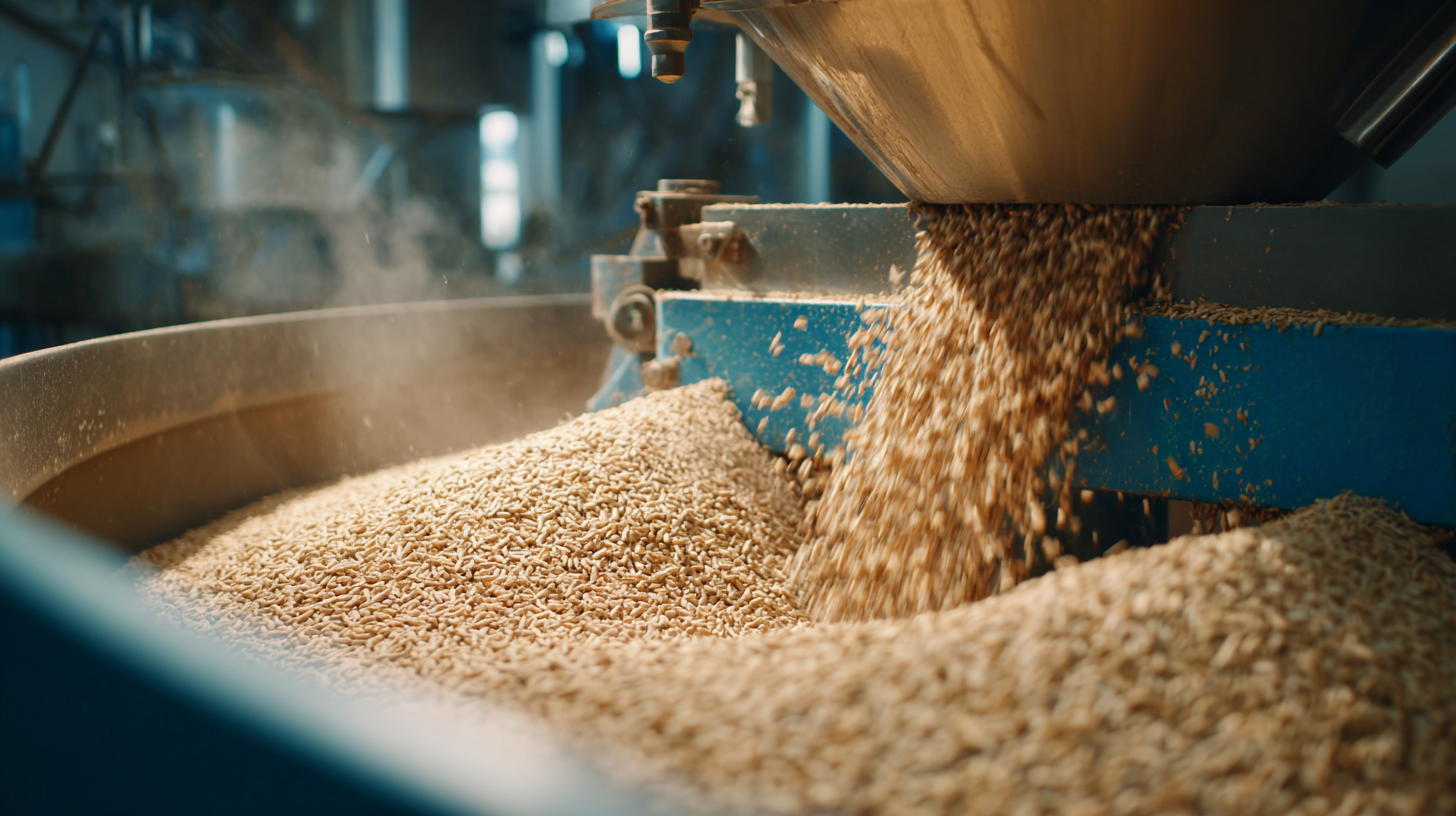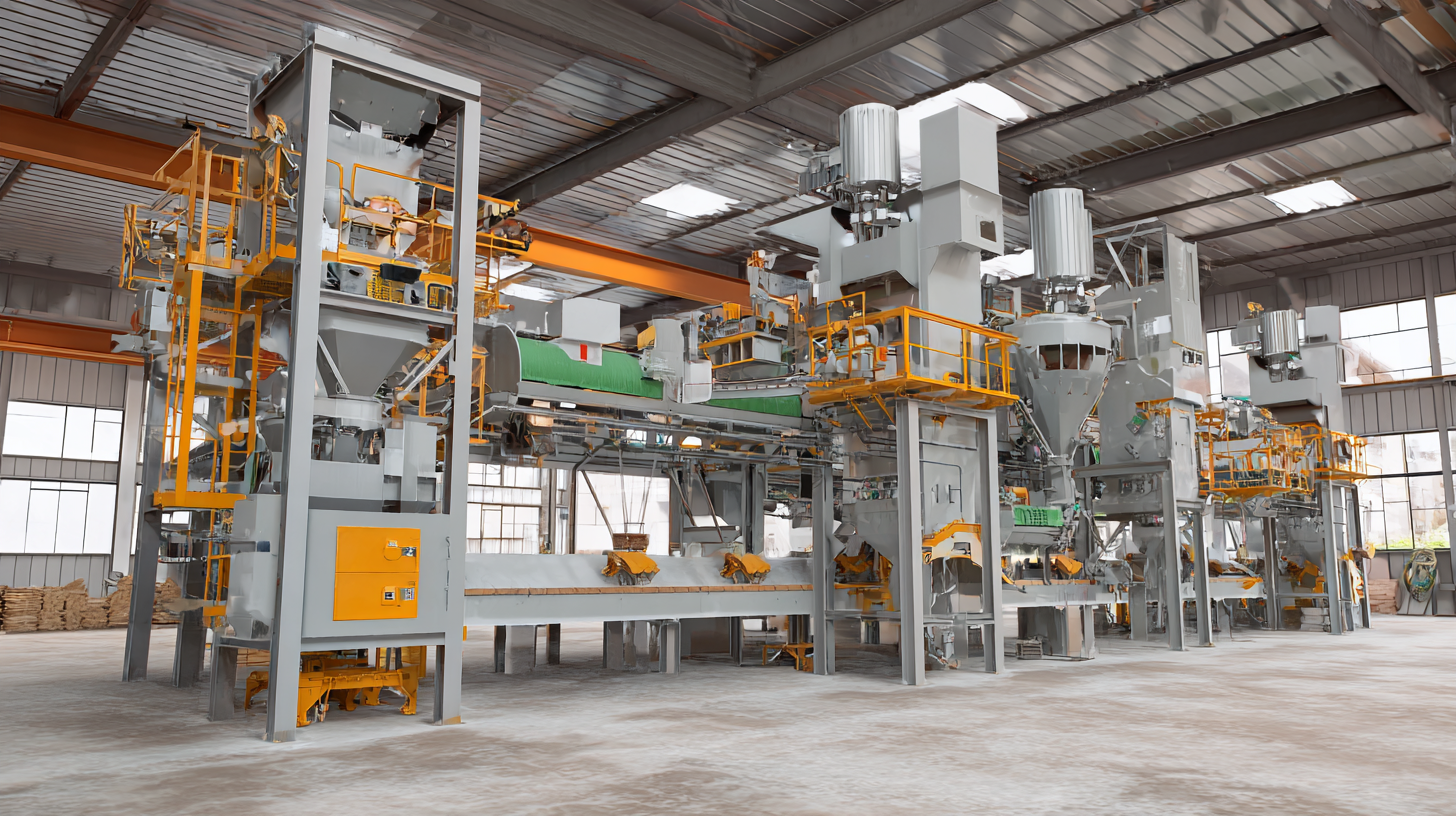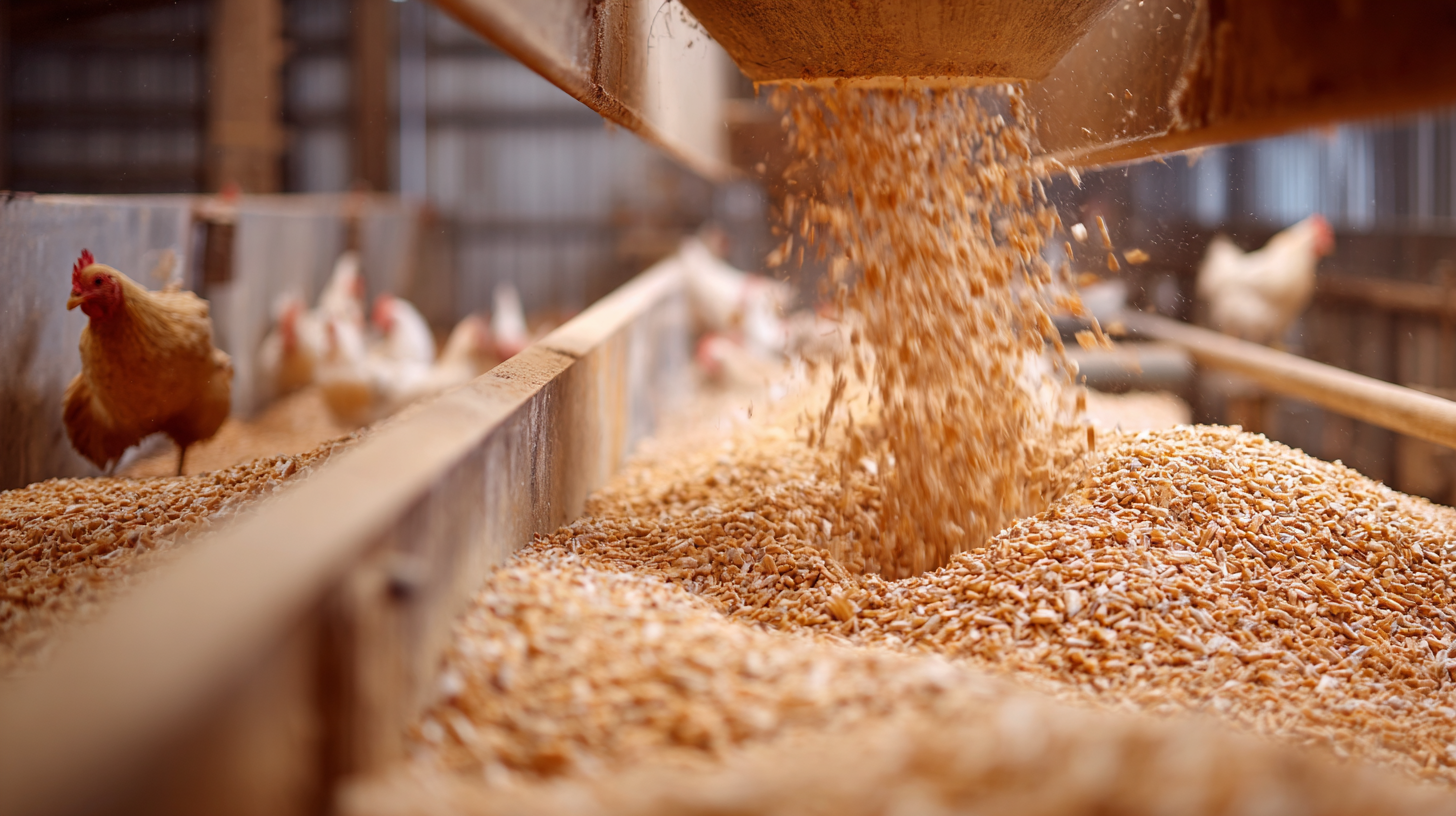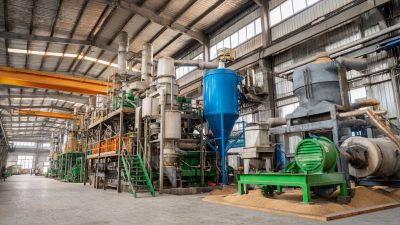Top Strategies for Enhancing Efficiency in Chicken Feed Milling Operations
Table of Contents
- Understanding the Key Components of Chicken Feed Milling Efficiency
- Optimizing Raw Material Selection for Better Feed Quality
- Implementing Advanced Equipment for Streamlined Milling Processes
- Utilizing Technology for Real-Time Monitoring and Control
- Training Staff for Enhanced Productivity in Feed Manufacturing
- Evaluating and Improving Supply Chain Management Practices
- FAQS
- Conclusion
- Related Posts
In the ever-evolving landscape of poultry production, enhancing efficiency in chicken feed milling operations is paramount for optimizing productivity and profitability. With the global poultry feed market expected to reach USD 500 billion by 2025, the role of advanced machinery, such as the Chicken Feed Milling Machine, becomes increasingly critical. Companies like Shanghai Zhengyi Machinery Engineering Technology Manufacturing Co., Ltd. (CPSHZY) have dedicated over 25 years to providing high-quality feed processing machinery and producing durable pellet mill dies. Their innovative solutions contribute not only to the efficient production of feeds but also to implementing environmentally responsible practices in feed plants and aquaculture farms. By adopting top strategies for improving operations, poultry businesses can better meet the growing demands of the industry while ensuring sustainability and profitability.

Understanding the Key Components of Chicken Feed Milling Efficiency
Enhancing efficiency in chicken feed milling operations is a multifaceted task, rooted in a clear understanding of the key components that drive productivity. According to a report by the American Feed Industry Association, maintaining optimal particle size in feed formulations can lead to a 5-10% increase in feed conversion rates. Ensuring that milling equipment is calibrated for consistent particle distribution not only improves animal nutrition but also reduces waste and contributes to overall operational efficiency.
**Tip:** Regularly monitor and adjust the moisture levels of feed ingredients, as fluctuations can negatively impact milling performance and product quality. A study by the Feed Science and Technology Association noted that maintaining moisture within the ideal range can reduce energy consumption by up to 15%, highlighting the importance of ingredient preparation.
Understanding and implementing efficient feeding techniques also plays a critical role. A survey conducted by the Association of American Feed Control Officials indicated that incorporating a more diverse range of feed ingredients could improve feed efficacy by 7-12%, thereby optimizing the milling process. Ensuring a balanced ration not only supports poultry growth but also enhances feed usability, mitigating production costs.
**Tip:** Evaluate your ingredient sourcing strategy to ensure a steady supply of high-quality raw materials, as these are crucial for maintaining consistency and efficiency in feed production.
Optimizing Raw Material Selection for Better Feed Quality
Optimizing raw material selection is crucial for enhancing the quality of chicken feed in milling operations. The quality of feed directly affects the health and growth rates of poultry, making it essential for feed manufacturers to refine their ingredient choices. Studies indicate that feed formulation comprising at least 60% high-quality grains, such as corn and wheat, can significantly improve feed efficiency and animal performance. Furthermore, incorporating various protein sources, like soybean meal, can enhance nutritional balance and promote optimal growth in poultry.
In addition, feed quality assessment tools and practices are increasingly being adopted within the industry. For instance, utilizing near-infrared spectroscopy (NIRS) allows manufacturers to analyze raw materials rapidly, ensuring that only those meeting specific nutritional benchmarks are selected. Data from recent industry reports indicate that implementing such technologies can lead to a 20% improvement in feed quality, which contributes to reduced feed waste and better overall productivity in milling operations. By focusing on raw material optimization, feed manufacturers can not only enhance the quality of their products but also sustain their operations in an increasingly competitive market.
Implementing Advanced Equipment for Streamlined Milling Processes
In enhancing efficiency in chicken feed milling operations, the implementation of advanced equipment plays a crucial role. The global CNC machine market is set to expand significantly, projected to grow from $101.22 billion in 2025 to $195.59 billion by 2032, which underscores the increasing importance of automation and precision in manufacturing processes. This technological evolution is essential for optimizing milling operations, reducing waste, and improving product consistency in the poultry industry.
The integration of AI-driven technologies is revolutionizing various sectors, including milling operations. For instance, AI applications streamline processes by analyzing data in real-time to enhance decision-making and operational efficiency. Companies are utilizing AI to monitor and control milling parameters, ensuring that the feed produced meets stringent quality standards while minimizing resource consumption. As organizations adopt these advanced solutions, they not only boost their operational efficacy but also position themselves competitively in a rapidly evolving market landscape.
Top Strategies for Enhancing Efficiency in Chicken Feed Milling Operations
Utilizing Technology for Real-Time Monitoring and Control
The integration of Internet of Things (IoT) technology in chicken feed milling operations is a game-changer for enhancing efficiency. By utilizing interconnected devices, operators can monitor and control processes in real-time, significantly improving workflow management. Smart sensors can track critical parameters such as temperature, humidity, and feed composition, ensuring that the milling conditions are always optimized. This real-time data allows for immediate adjustments, reducing waste and improving product quality.
Moreover, the implementation of IoT solutions fosters a more responsive operational environment. With data being collected continuously, any anomalies can be promptly detected and addressed, minimizing downtime and potential financial losses. This level of responsiveness not only enhances efficiency but also contributes to better resource management, particularly in energy and water usage. Embracing these technologies not only prepares feed milling operations for the future but also positions them as leaders in sustainability within the agricultural sector.
Training Staff for Enhanced Productivity in Feed Manufacturing
Effective training of staff is essential for boosting productivity in feed manufacturing, particularly in chicken feed milling operations. By providing comprehensive training programs, companies can ensure that their employees are well-versed in both the technical and operational aspects of milling. This not only improves individual performance but also fosters a culture of continual improvement, where employees actively seek out ways to enhance processes and reduce waste.

Customized training sessions that focus on the latest milling technologies and techniques can empower staff to operate equipment more efficiently and troubleshoot issues as they arise. Additionally, hands-on training allows employees to develop practical skills that are crucial for smooth operation. Incorporating mentorship opportunities where experienced staff guide newcomers can also enhance knowledge transfer and build a cohesive team dedicated to quality and efficiency.
By investing in staff training, feed manufacturing operations can significantly enhance their output and maintain a competitive edge in the industry.
Evaluating and Improving Supply Chain Management Practices
Effective supply chain management is crucial for enhancing efficiency in chicken feed milling operations. According to a report by the National Chicken Council, feed accounts for approximately 70% of the total production costs in poultry farming. This significant figure emphasizes the need for mills to optimize their supply chains, ensuring that raw materials are sourced effectively and transported efficiently. Implementing just-in-time (JIT) inventory systems can help minimize waste and reduce holding costs, thus streamlining operations.
Moreover, investing in technology can lead to improvements across the supply chain. A study by the Feed Manufacturing and Technology Conference highlights that mills utilizing data analytics and predictive modeling can decrease their operational disruptions by up to 30%. This not only maximizes productivity but also enhances the responsiveness to market demands. By integrating advanced tracking systems and automated inventory management, feed mills can ensure a steady supply of ingredients while maintaining quality and reducing the risk of shortages, ultimately leading to more efficient and sustainable operations in the poultry industry.

FAQS
: High-quality grains and additives enhance the nutritional value of chicken feed, leading to better feed conversion rates and overall farm productivity.
Advances such as precision milling equipment and automation can increase throughput by up to 25%, improve particle size control, and reduce waste.
Regular evaluation and maintenance of milling equipment are essential to prevent downtime and ensure optimal operation.
Training programs enhance throughput techniques and ensure effective quality control, contributing to overall efficiency and productivity.
Modern technologies like high-speed grinders and automated batching systems improve precision, reduce processing time, and optimize the consistency and quality of feed.
IoT technology allows for real-time monitoring and control of processes, enhancing workflow management and enabling immediate adjustments to optimize milling conditions.
Smart technologies provide real-time data for better inventory management and predictive maintenance, reducing downtime and ensuring peak equipment performance.
Yes, utilizing state-of-the-art machinery allows producers to tailor feeds to specific nutritional requirements based on the demands of their operations.
Continuous data collection helps detect anomalies and improve resource management, particularly in energy and water usage, thereby enhancing sustainability efforts.
By minimizing waste and energy consumption through advanced technologies, modern milling systems promote more sustainable operations in the competitive poultry industry.
Conclusion
In the pursuit of enhancing efficiency in chicken feed milling operations, understanding the key components that contribute to effective milling is essential. Optimizing raw material selection not only improves feed quality but also maximizes the nutritional value for poultry. The integration of advanced chicken feed milling machines can streamline processes, ensuring consistent product output while minimizing waste. Utilizing technology for real-time monitoring and control fosters an environment of precision and responsiveness, which is crucial for maintaining high productivity levels.
Moreover, investing in training for staff is paramount to enhance productivity in feed manufacturing. By empowering employees with the right skills, companies can achieve better operational outcomes. Finally, continuous evaluation and improvement of supply chain management practices can further enhance efficiency. At Shanghai Zhengyi Machinery Engineering Technology Manufacturing Co., Ltd., we leverage over 25 years of expertise in producing reliable feed processing machinery to support these strategies, helping feed plants and aquaculture farms thrive in a competitive market.
Related Posts
-

Discover the Finest Chicken Feed Making Machines from China's Leading Manufacturing Factory
-

A Comprehensive Tutorial on the Best Animal Feed Pellet Making Machine for Beginners
-

Essential Guide to Maximizing Efficiency with Vertical Shaft Cement Mixers Checklist
-

How to Choose the Best Pellet Making Machine for Your Business Needs
-

Challenges Facing Global Buyers: Understanding Issues with Feed Pellet Manufacturing Machines
-

The Future of Feed Pellet Production Technologies
Blog Tags:

